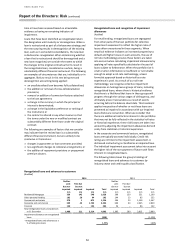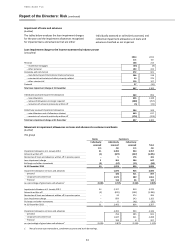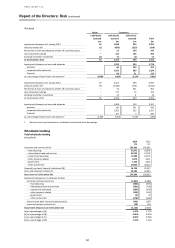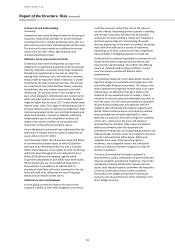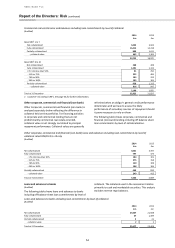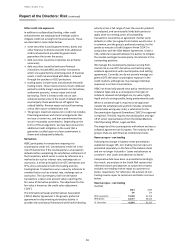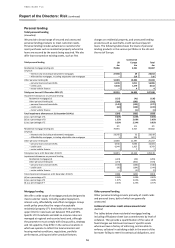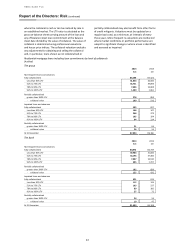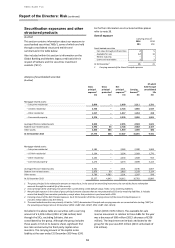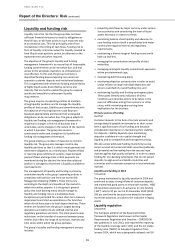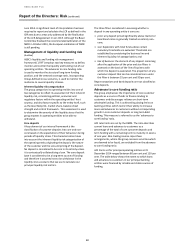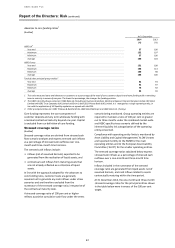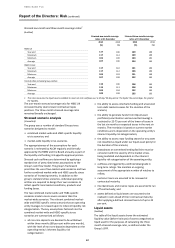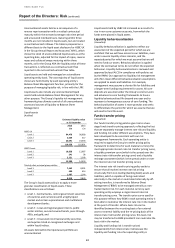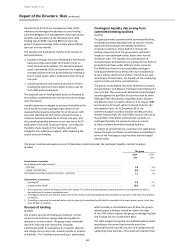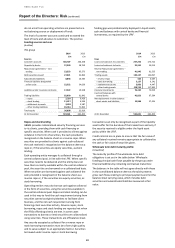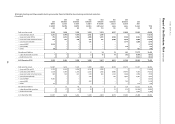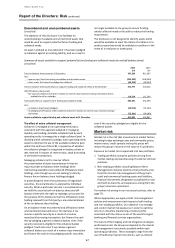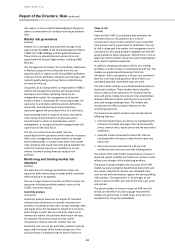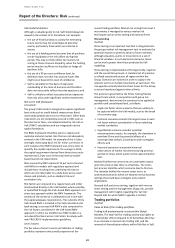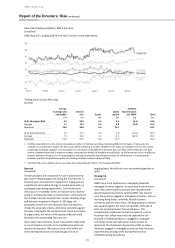HSBC 2014 Annual Report Download - page 62
Download and view the complete annual report
Please find page 62 of the 2014 HSBC annual report below. You can navigate through the pages in the report by either clicking on the pages listed below, or by using the keyword search tool below to find specific information within the annual report.
HSBC BANK PLC
Report of the Directors: Risk (continued)
60
June 2014. A significant level of interpretation has been
required to report and calculate the LCR as defined in the
CRR text due to areas only addressed by the finalisation
of the LCR delegated act in Jan 2015. Although the Basel
Committee finalised the recommended calibration of the
NSFR in October 2014, the European calibration of NSFR
is still pending.
Management of liquidity and funding risk
(Audited)
HSBC’s liquidity and funding risk management
framework (‘LFRF’) employs two key measures to define,
monitor and control the liquidity and funding risk of our
operating entities. The advances to core funding ratio
is used to monitor the structural long-term funding
position, and the stressed coverage ratio, incorporating
Group-defined stress scenarios, is used to monitor the
resilience to severe liquidity stresses.
Inherent liquidity risk categorisation
The group categorises its operating entities into one of
two categories to reflect its assessment of their inherent
liquidity risk, considering political, economic and
regulatory factors within the operating entities’ host
country, and also factors specific to the entity itself, such
as the local footprint, market share, balance sheet
strength and control framework. This assessment is used
to determine the severity of the liquidity stress that the
group expects its operating entities to be able to
withstand.
Core deposits
A key element of our internal framework is the
classification of customer deposits into core and non-
core based on the expectation of their behaviour during
periods of liquidity stress. This characterisation takes
into account the inherent liquidity risk categorisation of
the operating entity originating the deposit, the nature
of the customer and the size and pricing of the deposit.
No deposit is considered to be core in its entirety unless
it is contractually collateralising a loan. The core deposit
base is considered to be a long-term source of funding
and therefore is assumed not to be withdrawn in the
liquidity stress scenario that we use to calculate our
principal liquidity risk metrics.
The three filters considered in assessing whether a
deposit in any operating entity is core are:
• price: any deposit priced significantly above market or
benchmark rates is generally treated as entirely non-
core;
• size: depositors with total funds above certain
monetary thresholds are excluded. Thresholds are
established by considering the business line and
inherent liquidity risk categorisation; and
• line of business: the element of any deposit remaining
after the application of the price and size filters is
assessed on the basis of the line of business with
which the deposit is associated. The proportion of any
customer deposit that can be considered core under
this filter is between 35 per cent and 90 per cent.
Repo transactions and bank deposits are not classified as
core deposits.
Advances to core funding ratio
The group emphasises the importance of core customer
deposits as a source of funds to finance lending to
customers and discourages reliance on short-term
wholesale funding. This is achieved by placing limits on
banking entities which restrict their ability to increase
loans and advances to customers without corresponding
growth in core customer deposits or long term debt
funding. This measure is referred to as the ‘advances to
core funding’ ratio.
ACF ratio limits are set by the RMM. The ratio describes
current loans and advances to customers as a
percentage of the total of core customer deposits and
term funding with a remaining term to maturity in excess
of one year. Non-trading reverse repurchase
arrangements, where the group receives securities which
are deemed to be liquid, are excluded from the advances
to core funding ratio.
ACF limits set for principal operating entities at 31
December 2014 ranged between 80 per cent and 120 per
cent. The table below shows the extent to which loans
and advances to customers in our principal banking
entities were financed by reliable and stable sources of
funding.


